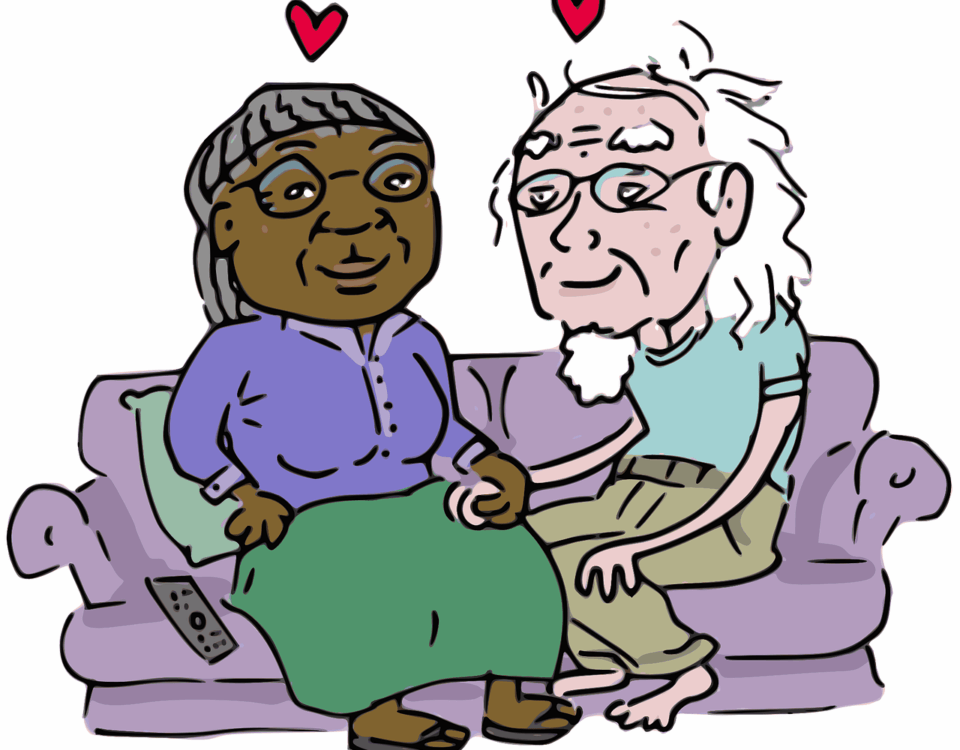
Gift
July 28, 2020
12 Insights Into Grieving After The Death Of Your Loved One
August 4, 2020Share This Article
Understanding Grief is Another
Expression of Love
By Larry Barber
Ken sat on the couch across from me, smiled and exclaimed, “I stopped it! The uncontrollable crying. I stopped it!”
Just the week prior I had been at a loss as the 59-year-old self-avowed “momma’s boy” cried with an overpowering despair. He had been completely inconsolable over the death of his 82-year-old mother.
As a fledgling bereavement counselor, I had walked away from his initial session wondering if I could ever be able to help Ken. His inability to see any reason for joy and hope had silenced me for almost the entire hour.
For all of Ken’s life prior to his mother’s death, each had been all the other had. A successful businessman, Ken had never married and neither had his mother. Failing health had forced her to move in with her son, and he had been her primary caregiver for the last five years before her death. Ken’s despondency had been unlike many of the other hospice family members I had counseled. Most mourning adult children had been accepting of their elderly parent’s death. Ken refused to accept the new reality.
In the first session Ken had expressed absolute despair and anger that every time he thought he was making progress in his grief, the memories of his mother would intrude. With those memories came a bleak sadness that caused him to surrender to sadness and “cry like a baby.”
Today Ken was a different man. Instead of despair, a sense of joy surrounded him. He excitedly shared that after several unpleasant crying spells, he had come to a surprising conclusion. “I always enjoyed visiting with mother because I Iove her,” he explained. With tears streaming down his smiling face Ken said he realized his grief caused by his love for his mother was now the only connection that he still had with her. “The tears…the grief are my love for my mother,” he beamed. “So now when the memories and gloom come, I say, ‘Hello, Mother. It’s good to see you again.’ Then we have a good visit.”
Ken was ecstatic and I was stunned. This was a turning point in his early grief. Ken’s insight that grief is love was a monumental jump for him toward healing from the emotional trauma of loss. The realization did not stop Ken from mourning or missing his mother. The new insight powerfully changed how he viewed his grief, how he processed it and how he expressed it. Now he saw his grief outbursts as positive, healthy events and not something to be feared and avoided.
Knowing that his grief was a connection to his mother produced by his love caused Ken’s grief to be changed in two significant ways. First, the realization stopped Ken’s struggle against experiencing his grief in a meaningful and healing way. Now he could embrace his mother’s once intrusive visits into his thoughts. Second, Ken maintained his love for his mother and their relationship despite her death. Although Ken had lost the physical presence of his mother in the relationship, he was still connected to her emotionally and spiritually.
Ken’s insight that grief is love and that relationships do not end with death was also an eye-opening moment for me as a bereavement specialist. I had learned that grief is simply another expression of the love or emotional investment toward the one who has died. Grief is not just the result of love and loss. Grief is the continued love for the person who died combined with the mourner’s yearning to be in the loved one’s presence just one more time.
Death does not kill relationships. However, death does change relationships. Death removes the physical presence of our loved one from the relationship bond, but the spiritual and emotional attachments to the loved one remain and can be nurtured.
The real struggle of grief comes from a natural human response to protest the new reality after death. The thought that one moment a loved one is there and the next minute gone is a harsh, painful concept. Mourners know the consequences of death, but they do not want to feel forced to live with this distressing truth.
Death and “giving up” our loved one is not our wish and this is not the way that we feel life should be. Therefore, we as protesting mourners create a longer, harder struggle for ourselves. We do not wish to stop loving the one who has died, and we do not wish to leave the person in our past. So we rail against reality and moving toward healing.
Knowing that grief is the continued expression of love lets us understand that we do not have to “give up” or “let go” from the one who died. We can realize that we are not forced to forget or leave the person in our past. We live with the comforting thought that we carry loved ones into our future. Knowing grief is love is an empowering insight which does not eliminate the struggle of grief, but it can make the intense battle against the loss shorter and less difficult.
About the Author

Larry Barber knows grief all too well. In May 1993 his wife and two-year-old daughter died in a traffic accident in Arlington, Texas. As a widowed single parent he raised two surviving children, ages 9 and 12. Barber is a minister, a licensed professional counselor, and certified in Thanatology through the Association for Death Education and Counseling. He has served as a hospice bereavement coordinator, a grief counselor and support group facilitator, and as the director of GriefWorks www.grief-works.org in Dallas TX. Barber is the author of “Love Never Dies: Embracing Grief with Hope and Promise,” available online at Amazon. Committed to sharing grief insights shared with him by fellow mourners, he is tireless in efforts to comfort and equip mourners.











